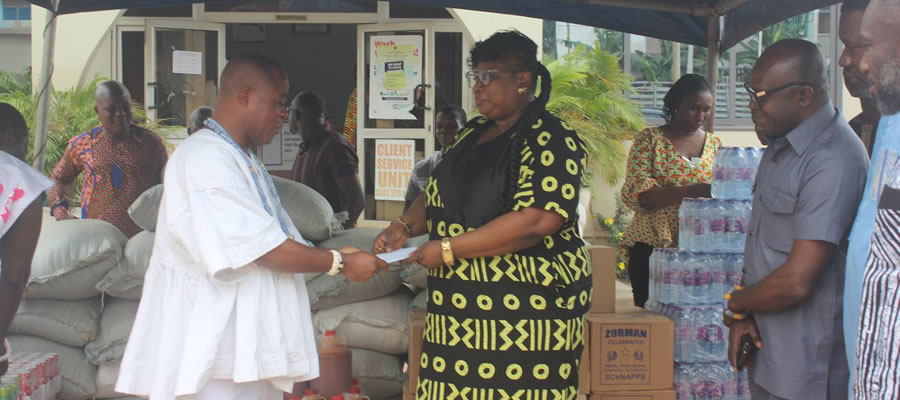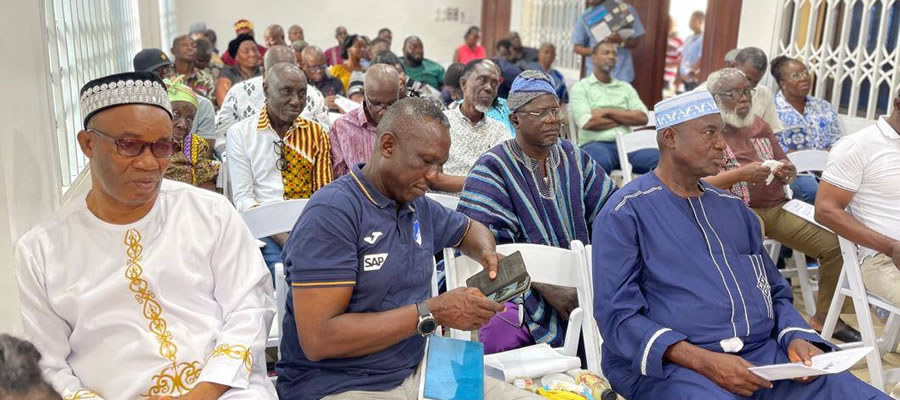

Location and Size
The Adentan Municipal Assembly (with Adentan as its Central Business District) lies 10 kilometres to the Northeast of Accra, which is specifically located on latitude 5' 43'' north and longitude 0' 09'' West. The Municipal has a land area of about 928.4 sq km. It shares boundaries with Ashaiman Municipal Assembly and Kpong Akatamanso District Assembly in the east and north, La Nkwantanang Municipal Assembly in the West and south, in the north
Climate
Temperatures are generally high throughout the year. The high temperatures warm up the air, which rises to condense contributing to the second type of precipitation called Conventional rainfall for the area. March to April is usually the hottest period with temperatures reaching 32°C during the day and 27°C at night. Cooler temperatures occur from May to September, with a high of 27-29°C during the day and 22-24°C in the night. Adentan experiences two types of rainy seasons: the first and the major season is from April to July while the second but minor season is from September to November. The bi-modal rainfall pattern provides a suitable environment for farming activities in most months (8 months) of the year as residents are able to cultivate and harvest different type of crops in each season.
Vegetation
The rainfall pattern and the terrain of Adentan have influenced the vegetation cover of the environment. The southern part of Adentan is covered by Savannah grass with scattered Nim trees. The northern part has Savannah semi-rain forest with deciduous trees but due to human activities, the general vegetation cover of some parts of the community have changed to grassland and in some places, bare land. The climatic condition and vegetation cover have contributed immensely to animal rearing and vegetable production in the area.
Soil and geology
The soils are highly elastic when wet but become hard and compact when dry and then crack vertically from the surface. This renders the soil unsuitable for land cultivation. The soil type is confined mainly to small amounts of subsistence crop farming. The short type of grassland provides extensive grazing fields. There are brownish grey, medium or coarse sand, underlain by a hard porous gristly loam along the Frafraha area. The soils have low nutritional status and are quick in becoming parched at the end of the rainy season. The area is underlain with Precambrian rocks of the Dahomeyan formation. Sedimentary rocks are deposited at the southern, western and eastern parts of the Municipality. Metamorphic rocks 2 deposits are found at the northern parts that consist of granite and gneiss making this part rocky and stony in appearance. The rock formation in the area has promoted stone quarry and sand winning, providing a kind of informal employment.
Date Created : 12/6/2017 1:30:50 AM












 facebook
facebook
 twitter
twitter
 Youtube
Youtube
 +233 593 831 280
+233 593 831 280 0800 430 430
0800 430 430 GPS: GE-231-4383
GPS: GE-231-4383 info@ghanadistricts.com
info@ghanadistricts.com Box GP1044, Accra, Ghana
Box GP1044, Accra, Ghana